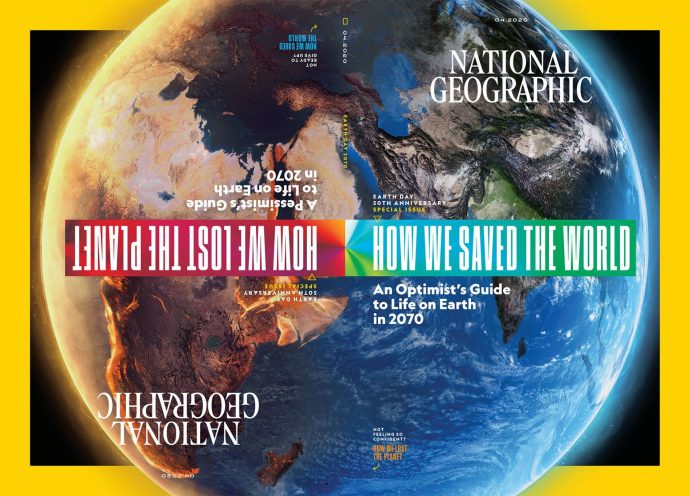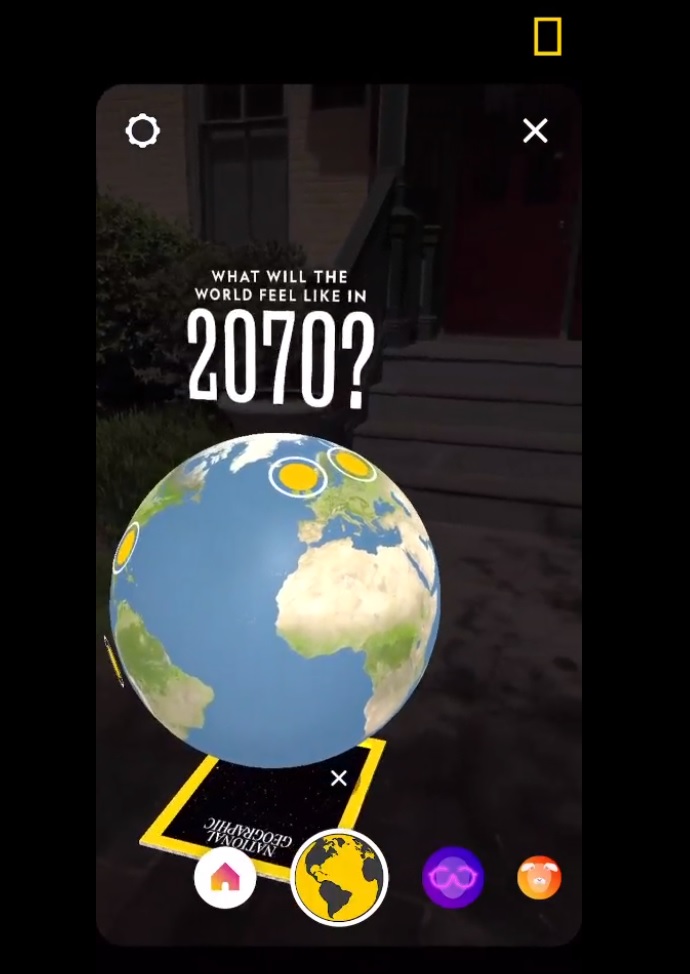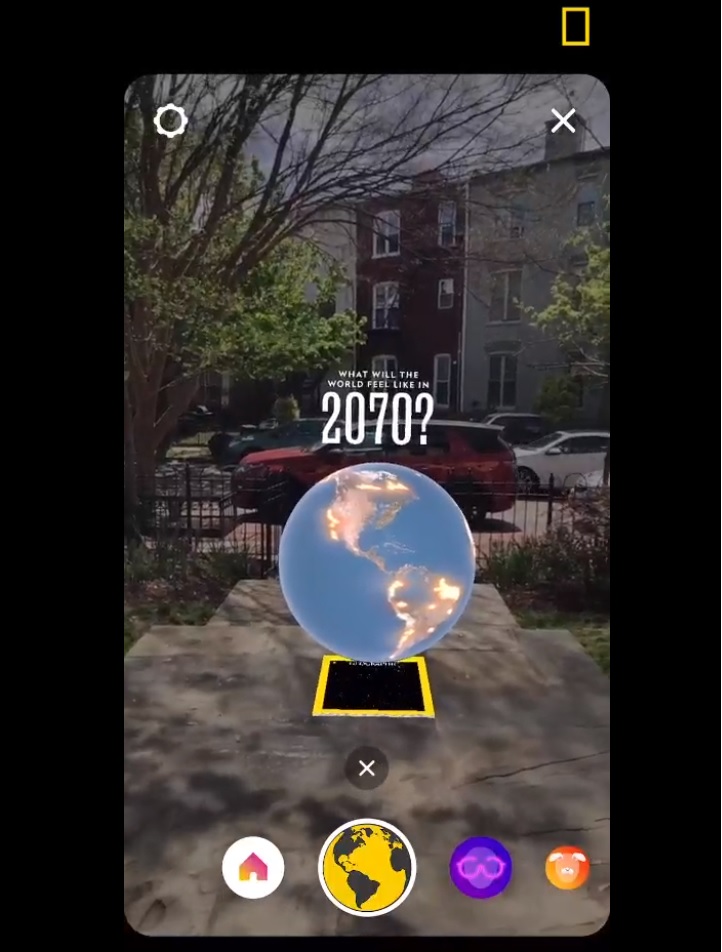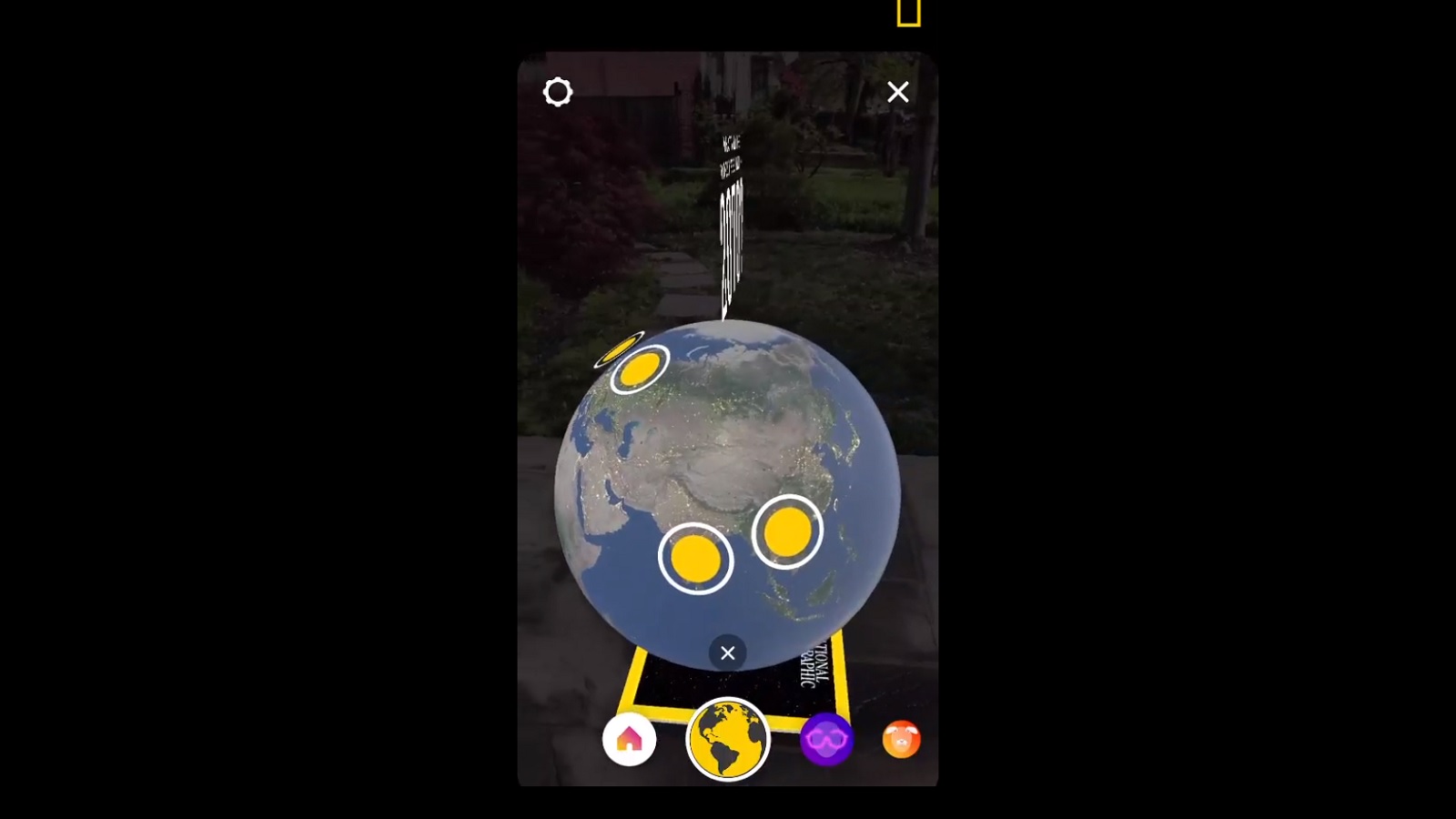22 April 2020 marks the 50th anniversary of Earth Day. Yet, this is the day in which we have to remind ourselves of the current challenges we face: a world pandemic and a possible disaster for our climate. Whilst the disease stands in the hands of the WHO and scientists, the fate of Earth’s climate change depends on our actions. We don’t know for sure what will happen 50 years from now. But there are different scenarios, two of which are featured in the “flip” issue of National Geographic, which celebrates Earth Day.
The optimistic view is written by writer Emma Marris, who sees a world in which technologies will be harnessed to “feed a larger population, provide energy for all, begin to reverse climate change, and prevent most extinctions.” Once you turn the magazine upside down, you get the pessimistic view, imagined by Elizabeth Kolbert. According to her, Earth will be all about longer droughts, deadlier heat waves, fiercer storms, and more. “I could go on and on listing the dangerous impacts of climate change,” Kolbert writes, “but then you might stop reading.”

It is impossible to know what fate Earth will have. Still, National Geographic gives it a try and imagines a world 50 years from now. Partnering with Facebook’s Spark AR platform, the magazine created an Earth Day issue that comes with an augmented reality-enabled cover. By using technology, Nat Geo opens the gates to a new world, one that can be explored in detail by Instagram users.
The adventure marks the publisher’s first AR-enabled cover, allowing anyone on Instagram, not just @natgeo followers, to use the interactive and find out how the climate of 2070 will feel like. The magazine claims that the AR experience can be enabled with one of its covers. Yet, we at Branding.news tried it without having one and it worked. So, how can you get a glimpse of the future? First of all, you need to know that this adventure happens on mobile only.

And here you are, holding your phone in your hands. By clicking here, you get to open the interactive in your Instagram app. While most AR experiences use the selfie camera, Nat Geo’s experience uses the front-facing camera. Therefore, you explore by walking around it. While touring the Earth’s surface, you will notice some yellow bullets, which are, in fact, some cities. 12 of them are featured in the app. By clicking on one of them you get to find what their fate will look like 50 years from now.
“For example, in 2070, Los Angeles will feel more like Morocco’s Ouezzane Province does today. And for some locations no line is drawn, that is because the activation is showing users that there is currently no location on the planet that feels the way these locations will in 50 years,” says Nat Geo via an email.
Yes, it is a pessimistic scenario. But it is up to you not to let this happen.

Credits:
